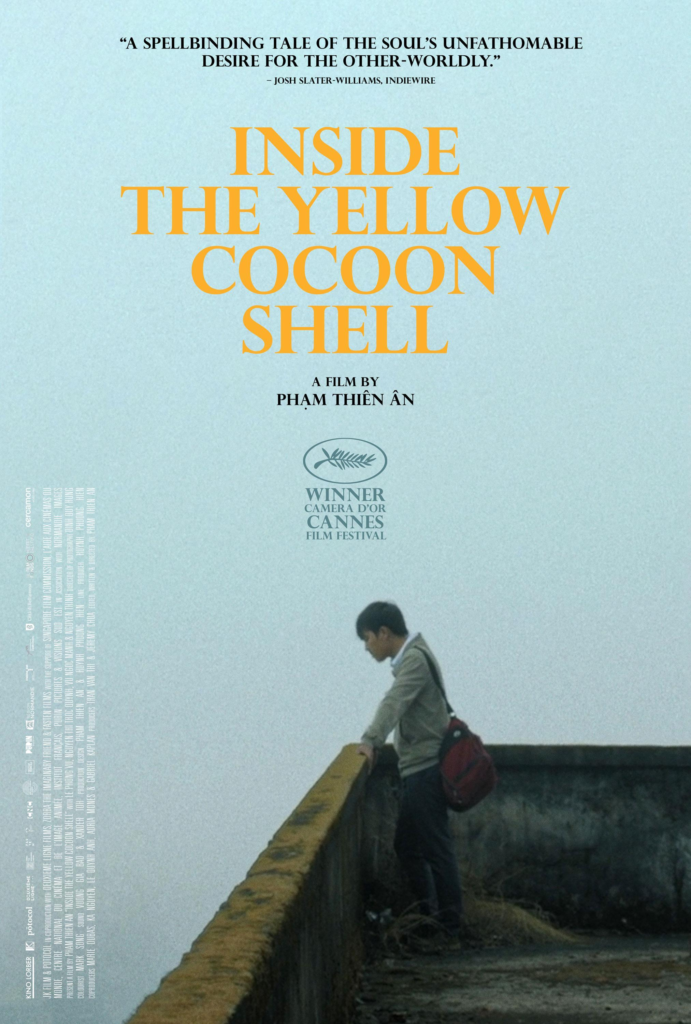Inside the Yellow Cocoon Shell Christian Review

There’s something inherently unsettling about walking into a film like Inside the Yellow Cocoon Shell. It’s a movie that defies everything we’ve come to expect from cinema today—the fast pace, the easy resolutions, the constant bombardment of sensory overload. But here we have something entirely different. A slow, meditative three-hour journey, where the only explosions are the quiet ones happening inside the human soul. And yet, as I sat with this film, I couldn’t help but feel that it’s exactly what we need in a world that’s constantly rushing, constantly searching for answers without ever pausing to reflect on the questions. For Christians, this is where Inside the Yellow Cocoon Shell begins to speak.
Grief As a Spiritual Portal
From the moment the protagonist, Thiên, is introduced, we can sense the weight he’s carrying. Grief is not a stranger in the Christian journey. We’ve all been there at some point—losing someone, something, and feeling that sudden, overwhelming need to question why. The film opens with the sudden death of Thiên’s sister-in-law, a tragedy that throws him into the depths of grief. It’s this grief that sets him on a journey, not just through the rural landscapes of Vietnam, but through the twisted and often baffling corridors of his own soul.
As Christians, we recognize this pattern all too well. Grief, in many ways, becomes a gateway—a painful one, yes—but also a portal through which God begins to reshape our hearts. We are reminded of Jesus in John 11, weeping at Lazarus’ tomb. Not merely because of the loss, but because grief touches us all, even the divine. Thiên’s journey in the film mirrors this. He is not looking for easy answers, and neither is God. This film, much like the Christian walk, is not about the quick fix; it’s about what happens to the soul when it walks through the valley of the shadow of death.
Beauty in the Silence
Inside the Yellow Cocoon Shell is not a film that panders to modern sensibilities. There are long, quiet moments. Some might even call them dull. But there’s a purpose in the silence. Life, real life, happens in these spaces. For Christians, silence is not a void—it’s the space where we hear God’s still, small voice. Psalm 46:10 echoes in the film’s pacing: “Be still, and know that I am God.” As Thiên traverses his physical and emotional journey, the camera lingers—on the swaying trees, on the empty streets, on his unreadable face—and we are forced to stop, to sit with our thoughts, to wrestle with our own silence.
This is perhaps one of the film’s greatest gifts. In a culture obsessed with distraction, Inside the Yellow Cocoon Shell demands that we be still. In this stillness, we begin to see the world in a different way. The mundane becomes sacred, and moments that seem insignificant take on profound meaning. Thiên’s journey doesn’t move at the speed of light, but at the speed of life—slow, meandering, sometimes frustratingly so. But that’s the point. Life with God doesn’t always move in straight lines. Sometimes it meanders through deserts, through wildernesses, through long, drawn-out nights where it feels like nothing is happening. And yet, in these spaces, God is at work.
Faith Without the Blueprint
The film doesn’t hand out neat, tidy answers. This can be frustrating, especially for those of us who like to have everything wrapped up in a bow by the time the credits roll. But isn’t that what faith often feels like? Romans 8:28 tells us that “in all things God works for the good of those who love Him,” but the tricky part is that we don’t always see how the pieces fit together. Thiên’s journey is messy. He doesn’t have a roadmap. He doesn’t know where his brother is or why his sister-in-law had to die. He doesn’t even know what he’s looking for half the time.
But isn’t that how we all walk through life sometimes? In the Christian journey, there are moments—perhaps seasons—where it feels like we’re wandering in the dark. We pray, we search, we ask God for answers, but often all we get is silence. Thiên’s story reminds us that this doesn’t mean God isn’t there. Faith, by its very nature, is walking without knowing what’s around the corner. Thiên doesn’t receive divine revelations. But through his wandering, he begins to understand something about himself, and in doing so, touches the edges of the divine.
Resurrection Through Loss
There’s a powerful theme of resurrection running beneath the surface of Inside the Yellow Cocoon Shell. As Christians, resurrection is more than just a theological idea—it’s the bedrock of our faith. Romans 6:4 tells us, “We too may live a new life” through the resurrection of Jesus. Thiên’s journey may not be explicitly Christian, but the echoes of resurrection are there. His world has fallen apart, and he is, in many ways, a dead man walking through the wreckage of his life.
But as the film progresses, we see glimmers of new life emerging. It’s slow, almost imperceptible, but it’s there. Thiên isn’t fully “resurrected” by the film’s end, but there’s a sense that he is on the path toward renewal. This is something Christians know well: resurrection isn’t always instant. It’s a process. It’s God taking our broken pieces and slowly, patiently, putting them back together. Thiên’s journey is a reminder that even when it feels like everything has died, God is still in the business of bringing life out of death.
The Cocoon as Metaphor
The cocoon in the title is no accident. For Christians, the image of a cocoon is rich with meaning. It’s a place of transformation, of hidden growth. In 2 Corinthians 5:17, we are told that “if anyone is in Christ, the new creation has come: The old has gone, the new is here!” Thiên is, in many ways, inside his own spiritual cocoon throughout the film. He’s in a state of becoming, though he doesn’t fully realize it yet.
This cocoon stage is something all Christians go through. There are times in our spiritual lives where it feels like we’re stuck, like nothing is happening. But inside the cocoon, transformation is taking place. Thiên doesn’t emerge fully formed by the end, but the process has begun. And that’s what matters. For those of us walking with Christ, the cocoon is a symbol of hope. We may not see the full picture now, but God is at work in us, transforming us into something new.
Final Thoughts: The Faithful Journey
Inside the Yellow Cocoon Shell is not your typical film, and it’s certainly not for everyone. But for those willing to sit with it, to engage with its slow, deliberate pace, it offers something truly profound. For Christians, this film feels like a reflection of our own spiritual journeys—messy, confusing, full of unanswered questions, but ultimately leading toward something greater.
Thiên’s journey is a reminder that faith is not about having all the answers. It’s about trusting in the process, trusting that God is at work even when we can’t see it. And while the film may not explicitly speak of God, its themes of resurrection, grief, and transformation resonate deeply with the Christian walk. In the end, we are all inside the cocoon, waiting for the day when God will bring us out into the light, fully transformed and fully alive.
Rating: 9/10. A deeply spiritual film that offers a slow but rewarding exploration of faith, grief, and transformation. It’s not for everyone, but for those willing to engage with it, it offers a rich, contemplative experience.



